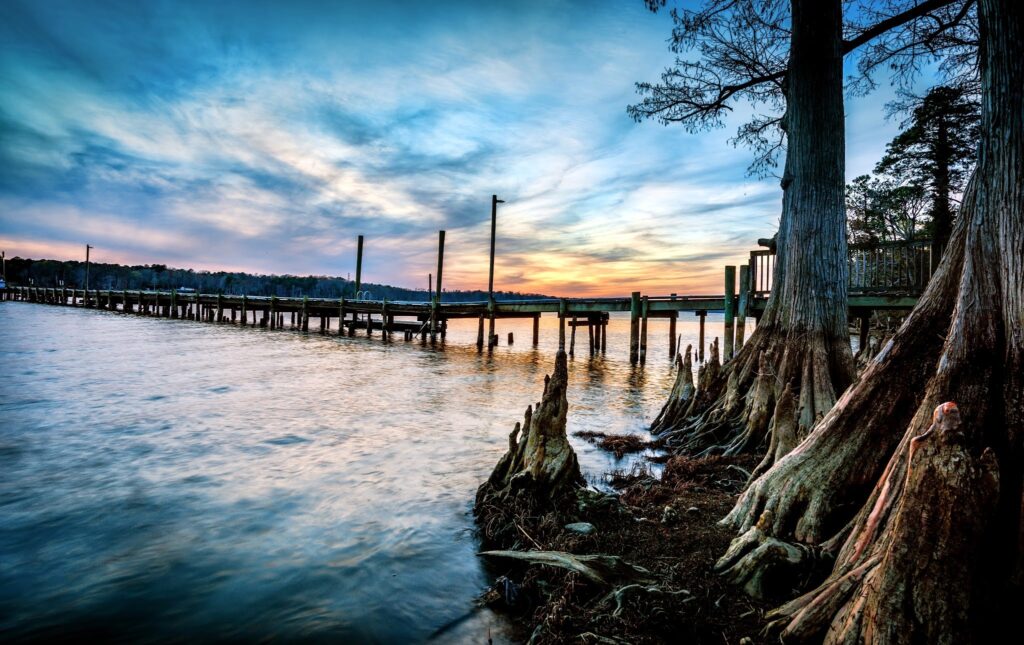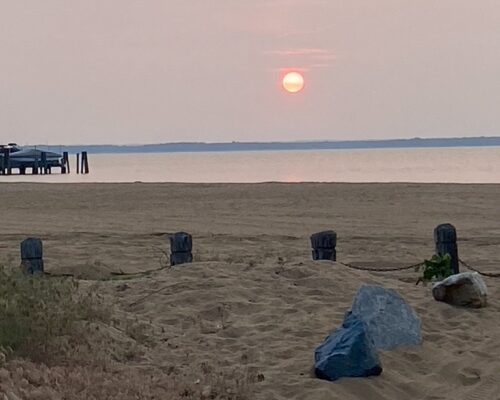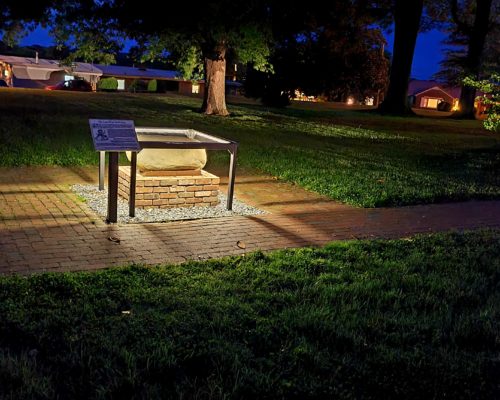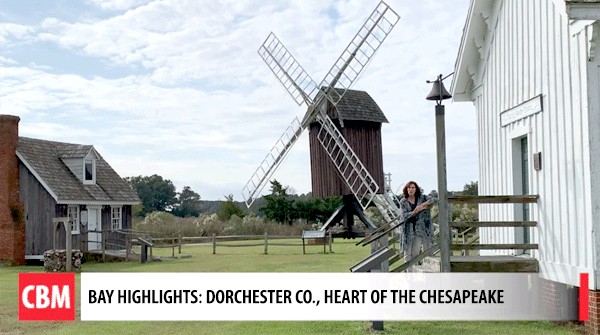August and early September bring a rich bloom to the tidal freshwater marshes of Virginia’s Chickahominy River. Even though temperatures are still warm, the days are getting shorter and critters can sense that fall is coming. Fish feed more eagerly, and birds descend on the seeds forming on the marsh plants, especially the ripening wild rice. It’s an ideal time to go skiffing.
For long explorations of the Chickahominy’s 21-mile tidal reach, choose a 14- to 18-foot outboard skiff with a push pole, but for the smaller creeks, a canoe or kayak is the ticket. There’s no better base for such adventures than the Chickahominy Riverfront Park.
Strategically located beside the Route 5 bridge, nine miles west of Williamsburg, the park has half a mile of river frontage and a mile’s worth on the tributary Gordon Creek. A century ago, before the bridge was built, the location was called Barrett’s Ferry, and in the late 20th century, it served as a family-owned fish camp before becoming a commercial campground. Thankfully, James City County acquired it some 20 years ago and has maintained it well, taking advantage of the location’s natural resources for canoe/kayak rentals, a wide concrete boat launch ramp on Gordon Creek, 80 camping sites, a fishing pier, and walking trails while offering conventional amusements like a swimming pool, a playground, and special events. It also provides access and parking for the Virginia Capital Trail, a regional, 55-mile multi-use trail connecting all the state capitals of Virginia’s history, Jamestown, Williamsburg, and Richmond.
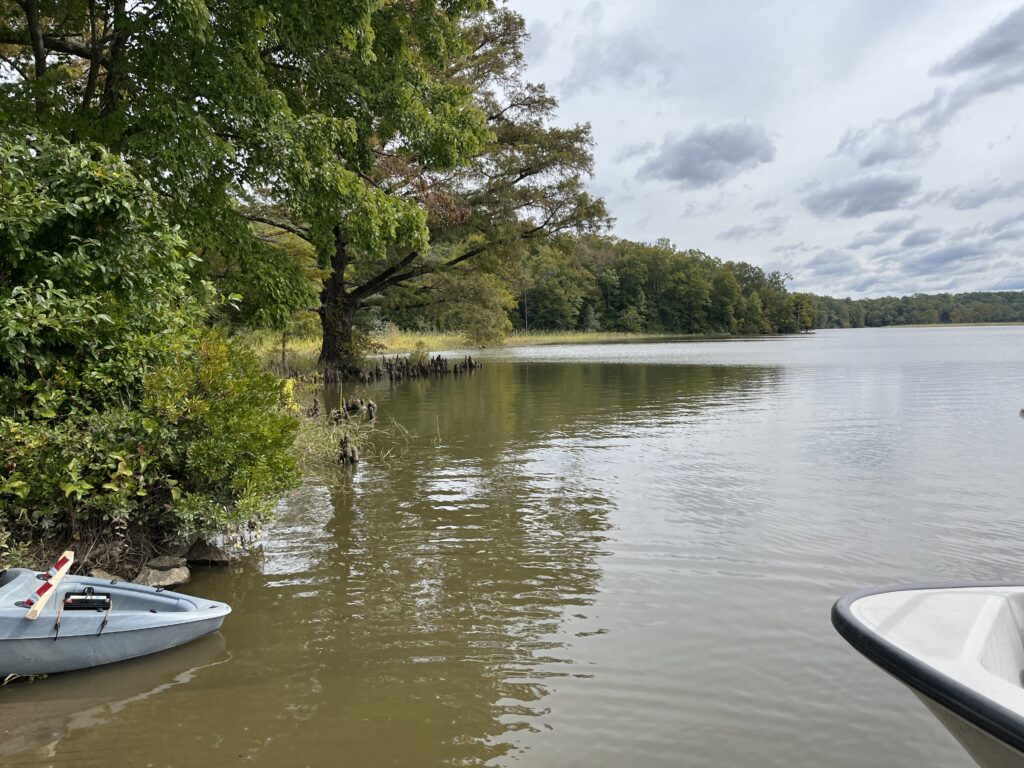
For paddling, pick a day when the tide is high at midday near the campground. Launch into Gordon Creek and ride the current upstream. The creek has a large watershed, draining rainfall from much of the west side of Williamsburg, as you’ll see if you scout the trip ahead of time on Google Earth. The current is powerful; you’ll see it form eddies in the curves, indicating deep water (several holes are 10 to 20 feet deep). About two-and-a-half miles upstream, the channel will widen out into the shallows of Nayses Bay.
If you have plenty of time and energy, continue up the creek by paddling into the little bay’s northeast corner and turning upstream. As the tide turns, though, you’ll want to follow the ebb current into the northwest corner of Nayses Bay, where you’ll find the outlet into Nettles Creek, a distributary of Gordon Creek that flows west for about three miles to enter the Chickahominy’s main stem about a mile and a half north of the mouth of Gordon Creek. The campground’s ramp is just inside that creek’s mouth.
See what you’ve accomplished? You’ve just circumnavigated Gordon Island, with a fair current the whole way, except for the short last push inside the mouth of Gordon Creek at the end. This route has been a favorite for many years of the field educators (including this correspondent) who run the Chesapeake Bay Foundation’s Richmond-based Virginia Rivers and Streams – East canoe fleet, but always scheduled around the tide table.
So what is there to see on the circuit of Gordon Island in later summer? The island is actually three small stands of bald cypress and mixed interior woodland, surrounded by tidal marsh. By all means, explore the various tiny creeks you’ll find draining the island and the marsh. The water here is fresh or nearly so. Thus the vegetation is largely seed-bearing annual plants; in addition to the wild rice, whose flowering stalks will tower 6 to 8 feet over everything else, there will be broad-leaved, yellow pond lily, and arrow arum along the outside edges, with clumps of dotted smartweed, tearthumb, Walter‘s millet, rice cutgrass, tickseed sunflower, and giant bulrush scattered around the rice inside. Look hard and you may spot the blooms of crimson-eyed rose mallow and bright-red cardinal flower, along with deep-blue, finger-shaped blooms on the pickerelweed.
The great wildlife value of these plants is the fact that they reproduce primarily or entirely by sowing their seeds in the marsh, where the tide carries them out to the margins. From now through winter, the tons of seeds created by the Gordon Creek system will feed a constant parade of waterbirds, from red-winged blackbirds and sora rails to migratory waterfowl that will begin to arrive in the fall. In the meantime, the creek and this river serve as the home for multiple bald eagles and great blue herons that feed on its smaller forage fish. In August, there will still be some ospreys around, including newly fledged eaglets learning to fish and squawking incessantly. By Labor Day, though, they and their parents will all have headed south for their “other summer” between Cuba and Argentina.
Meanwhile, the creek system feeds plenty of insects and small fish that attract panfish like bluegill and crappie, along with predators, including channel catfish, blue catfish, and especially largemouth bass. If you’re on the water on a weekend, watch for anglers in high-powered bass boats. Most of them are considerate of paddle craft, but it pays to return the favor around them. Carry a fishing rod and a Virginia freshwater license. Be sure to check the season, length, and bag limits for any fish species you may encounter.
The Chickahominy is one of Virginia’s finest tidal rivers for largemouth bass. On a paddling trip, carry a short (5 to 6-foot), light spinning rod spooled with four- to six-pound test line. Cast small jigs, spoons, and spinners, especially into the mouths of tiny creeks in the marsh and around the bases of bald cypress trees. A classic pattern for the ebb current on the Nettles Creek leg of the trip is to look for eddies as the water runs out of those little marsh creeks or past the trunk and knees of a cypress tree. Bass will often position themselves just out of the current, ready to ambush any forage the current sweeps past.
Finally, pay attention to safety and the weather. Wear a life vest; let someone know where you are going and when you’ll be back. Protect yourself from the sun with appropriate clothing and sunblock. Stay hydrated. If it’s really hot, save the full circuit for another season (fall colors are wonderful here) and just explore Gordon Creek for an hour or two, turning around to return to the ramp. You’ll still see plenty, and you’ll have a good excuse to come back.

